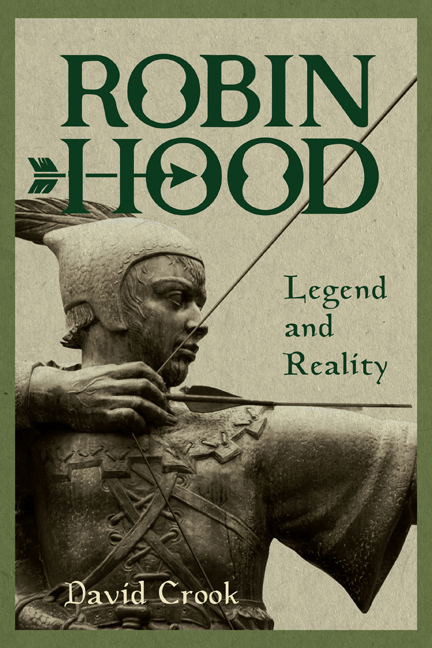Book contents
- Frontmatter
- Dedication
- Contents
- List of Maps and Illustrations
- Preface and Acknowledgements
- List of Abbreviations
- Introduction
- PART I THE LEGEND AND ITS INTERPRETERS
- Chapter 1 The Medieval Tales of Robin Hood
- Chapter 2 Chroniclers, Revellers, Playwrights and Antiquarians, c.1420–1765
- Chapter 3 Editors, the Folklorist and the Archivist, 1765–1889
- Chapter 4 Folklorists, Literary Scholars and Historians: Robin Hood in the Twentieth Century
- Chapter 5 The Robin Hood Places
- PART II OUTLAW AND EVILDOER OF OUR LAND: THE ORIGINAL ROBIN HOOD
- Chapter 6 The Robin Hood Names
- Chapter 7 Robin Hood and Criminality
- Chapter 8 Law and Disorder in Yorkshire, 1215–1225
- Chapter 9 The Sheriff, the Fugitive and the Civil Servant
- Conclusion
- Bibliography
- Index
Preface and Acknowledgements
Published online by Cambridge University Press: 16 September 2020
- Frontmatter
- Dedication
- Contents
- List of Maps and Illustrations
- Preface and Acknowledgements
- List of Abbreviations
- Introduction
- PART I THE LEGEND AND ITS INTERPRETERS
- Chapter 1 The Medieval Tales of Robin Hood
- Chapter 2 Chroniclers, Revellers, Playwrights and Antiquarians, c.1420–1765
- Chapter 3 Editors, the Folklorist and the Archivist, 1765–1889
- Chapter 4 Folklorists, Literary Scholars and Historians: Robin Hood in the Twentieth Century
- Chapter 5 The Robin Hood Places
- PART II OUTLAW AND EVILDOER OF OUR LAND: THE ORIGINAL ROBIN HOOD
- Chapter 6 The Robin Hood Names
- Chapter 7 Robin Hood and Criminality
- Chapter 8 Law and Disorder in Yorkshire, 1215–1225
- Chapter 9 The Sheriff, the Fugitive and the Civil Servant
- Conclusion
- Bibliography
- Index
Summary
This book is the work of a retired archivist, one of the last generation of assistant keepers of public records, using knowledge of the surviving early records of national government acquired over several decades (1974 to 2007) while working at what is now known as The National Archives (TNA), but was from 1838 until 2003 called the Public Record Office (PRO). It is the first attempt to make as comprehensive an examination as possible of the surviving evidence for the existence of a real original outlaw, active in the first quarter of the thirteenth century, from whom the legend of Robin Hood may ultimately have derived. Some of the administrative, financial and judicial documents relating to the period from the early thirteenth century to the early fourteenth, on which it is based, remained incompletely identified, listed and publicly available until the early twenty-first century. Even now a little work remains to be done, but an overwhelming proportion of the material is now also available in print or online, especially in the form of images on the Anglo-American Legal Tradition website (AALT), created by Professor Robert Palmer and hosted by the O’Quinn Law Library at the University of Houston, Texas. Most of these endeavours were carried out by the staff of the PRO/TNA itself and others working with or alongside them, including in particular the Pipe Roll Society, the Selden Society, the Universities of Cambridge and York, and King's College London.
In 1981 or 1982 I was systematically searching the memoranda rolls of the Exchequer in the PRO, looking for material for a possible article on the clerks who laboured in that department in the reign of King Henry III, when I made the chance discovery of a reference to a ‘William Robehod’, a criminal fugitive in Berkshire in 1262. I noted it in square brackets because, even though it was not of relevance to the subject I was researching, I had an instinctive feeling that it might be of some significance, and that I might never search through that document again.
- Type
- Chapter
- Information
- Robin Hood: Legend and Reality , pp. x - xiPublisher: Boydell & BrewerPrint publication year: 2020



